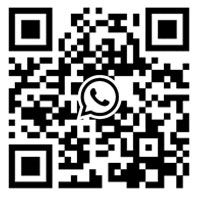How to Choose the Most Suitable Ultrasonic Level Transmitter: A Comprehensive Guide
Selecting the right ultrasonic level transmitter is crucial for accurate and reliable liquid level measurement in industrial applications. This guide will help you navigate the key factors to ensure optimal performance in your specific conditions.
1. Understanding Your Measurement Requirements
Measurement Range
-
Short range (0-5m): Standard ultrasonic transmitters (e.g., corrosion-resistant or explosion-proof models).
-
Medium range (5-60m): High-frequency models (30kHz+) for better signal penetration.
-
Long range (>60m): Consider radar level transmitters instead.
Accuracy Needs
-
Standard accuracy (±0.25%-0.5%): Suitable for general industrial use.
-
High accuracy (±0.1%): Required for precision applications (e.g., chemical dosing).
2. Matching the Transmitter to Liquid Properties
Liquid Type
-
Clean water/wastewater: Standard models work well (select anti-foaming algorithms if needed).
-
Corrosive liquids (acids, alkalis): Use PTFE-coated probes or 316L stainless steel housing.
-
Viscous liquids (oil, slurry): Low-frequency (10kHz) models with angled mounting to prevent buildup.
Surface Conditions
-
Calm surfaces: Standard transmitters.
-
Turbulent/foamy surfaces: High-frequency (80kHz) or dynamic signal filtering models.
-
Volatile liquids (alcohol, solvents): Sealed designs to prevent vapor interference.
3. Evaluating Environmental Conditions
Temperature Effects
-
Standard (-20°C to 60°C): Regular models.
-
High temperature (>60°C): Models with cooling fins or high-temperature probes (up to 150°C).
-
Low temperature (<-20°C): Requires heated probes to prevent freezing.
Pressure & Hazardous Areas
-
Atmospheric pressure: Standard models.
-
High-pressure vessels (>1MPa): Pressure-rated transmitters.
-
Explosive environments: ATEX/IECEx-certified models (e.g., Ex d IIC T6).
Installation Space
-
Tight spaces: Low blind zone models (<5cm).
-
Limited top access: Remote-mounted transmitters (separate sensor and display).
4. Key Technical Parameters Comparison
| Parameter | Selection Criteria | Example Models |
|---|---|---|
| Frequency | High (30-80kHz) for accuracy, Low (10-20kHz) for penetration | Siemens 7ML5221 (High-frequency) |
| Output Signal | 4-20mA (long-distance), RS485 (digital) | E+H FDU91 (4-20mA + RS485) |
| IP Rating | IP67 (outdoor), IP68 (submersible) | VegaPuls 64 (IP68) |
| Blind Zone | 10-15% of range (smaller is better) | Keller 9L (0.1m blind zone) |
5. Installation Best Practices
✔ Avoid obstacles: Keep probes >0.3m from walls and away from inlets.
✔ Calibration: Perform empty & full-tank calibration for accuracy.
✔ Sloped surfaces: Use still wells or guide tubes for stable readings.
6. Common Mistakes to Avoid
❌ Ignoring condensation: Use purge units or desiccant-filled housings in humid environments.
❌ Overestimating range: Select a transmitter with 20% extra range for reliability.
❌ Obstruction interference: Use multi-echo processing in complex tanks.
Final Recommendation
For ultrasonic level transmitter selection, prioritize:
✅ Measurement range & accuracy
✅ Liquid & environmental compatibility
✅ Proper installation & calibration
If conditions are extreme (e.g., vacuum, heavy dust), consider radar or laser level sensors as alternatives.
For further reading, explore:
By following this structured approach, you can ensure optimal performance and long-term reliability for your liquid level monitoring system.
- Why is the thermal gas mass flowmeter not affected by pressure strength and temperature?
- What to do when a thermal gas mass flow meter fails?
- How are thermal gas mass flow meters used? What are the applications?
- Under what circumstances is the gas measurement need to be regulated compensated vortex flowmeter
- Why Is The Aister Thermal Gas Mass Flowmeter So Popular ?
- Gas turbine flowmeter manufacturers explain their main advantages in measurement
- Gas turbine flowmeter manufacturer Aister instrument field experience summary
- Aister Instrument Empowerment Conference








